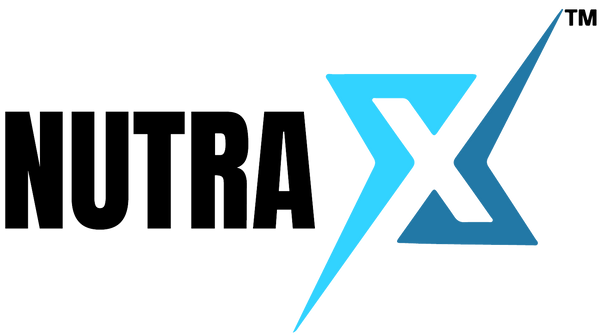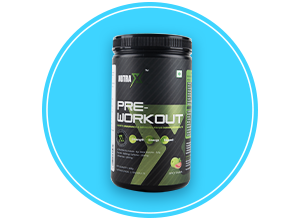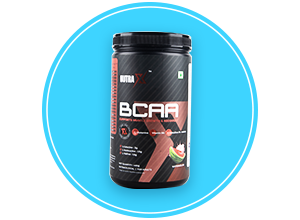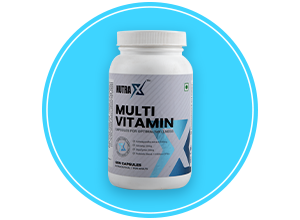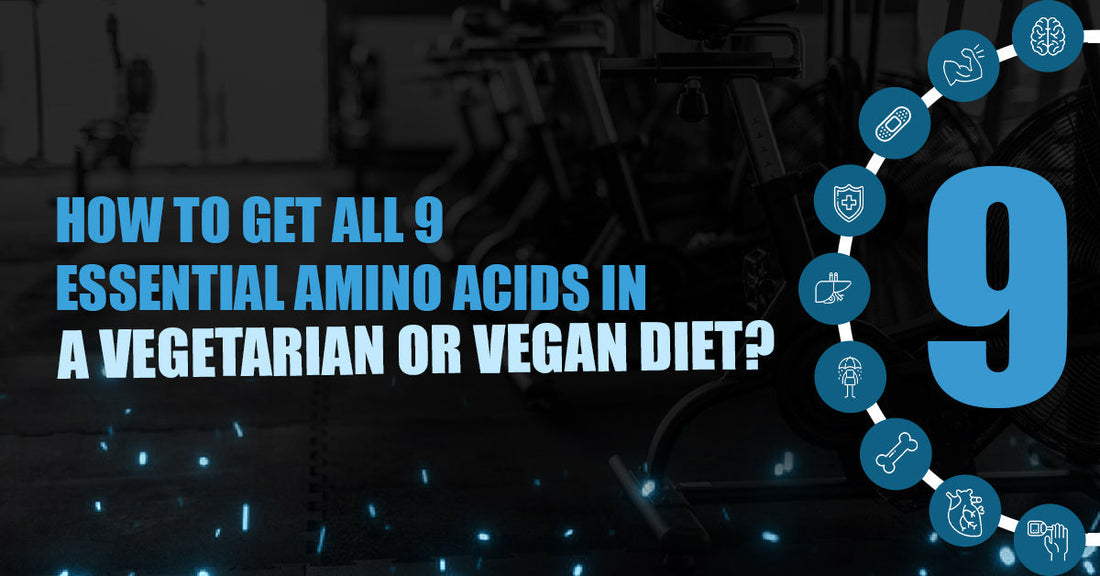
How to Get All 9 Essential Amino Acids in a Vegetarian or Vegan Diet?
Share
How to Get All 9 Essential Amino Acids in a Vegetarian or Vegan Diet?: Getting all nine essential amino acids on a vegetarian or vegan diet is not only possible, it’s straightforward with the right approach. These amino acids histidine, isoleucine, leucine, lysine, methionine, phenylalanine, threonine, tryptophan, and valine are crucial for muscle repair, hormone production, immune function, and overall health. Because our bodies can’t produce them, we must get them through food.
Understanding the Basics
Animal-based proteins like meat, eggs, and dairy naturally contain all nine essential amino acids in the right proportions, making them "complete proteins." Most plant-based proteins, however, are "incomplete," meaning they lack one or more of these amino acids. But this isn’t a problem if you know how to balance your meals.
The key is variety. By combining different plant foods throughout the day, you can easily get a complete amino acid profile. Your body doesn’t need every amino acid in every meal-it just needs a consistent daily supply.
Complete Plant-Based Protein Sources
Some plant foods are naturally complete proteins. These include:
- Soy Products: Tofu, tempeh, edamame, and soy milk are rich in protein and contain all essential amino acids.
- Quinoa: This seed is a rare grain-based complete protein and is easy to cook like rice.
- Buckwheat: Despite the name, it’s gluten-free and packed with complete protein.
- Hemp Seeds: High in omega-3s and all nine essential amino acids.
- Chia Seeds: Great in smoothies or oats, offering a fiber-protein combo.
- Amaranth: A grain-like seed with complete protein content.
- Nutritional Yeast: Popular for its cheesy flavor and complete protein profile.
Including these in your diet regularly gives you a solid foundation.
Complementary Proteins: Smart Pairings
When plant proteins lack certain amino acids, you can pair them with others that fill the gaps. Here are some classic combinations:
- Legumes and Grains: Beans and rice, lentils and whole wheat bread, and hummus and pita. Legumes are low in methionine but high in lysine, while grains are the opposite.
- Nuts/Seeds + Legumes: Peanut butter on whole grain toast or sunflower seeds in lentil salads.
- Vegetables + Grains or Legumes: Adding leafy greens or starchy vegetables boosts overall nutrition and adds supporting amino acids.
You don’t need to combine these in one meal. As long as you eat a variety of foods across the day, your body will draw what it needs.
Sample Vegan Meal Plan for Complete Protein
- Breakfast: Oatmeal with chia seeds, soy milk, and almond butter
- Snack: Hummus with whole grain crackers or veggie sticks
- Lunch: Quinoa salad with black beans, corn, avocado, and nutritional yeast
- Snack: Trail mix with pumpkin seeds, walnuts, and dried fruit
- Dinner: Stir-fried tofu with brown rice and steamed broccoli
This kind of meal plan provides a strong mix of amino acids, fiber, and healthy fats.
Special Attention to Key Amino Acids
Some amino acids tend to be more limited in plant-based diets:
- Lysine: Often low in grains but found in legumes (lentils, beans, and peas).
- Methionine: Lower in legumes but high in grains and seeds.
- Leucine: Found in soy, lentils, chickpeas, and seeds; important for muscle repair.
If you’re highly active or aiming to build muscle, pay extra attention to foods rich in these amino acids.
Supplements: Are They Necessary?
Technically, it’s possible to get all your essential amino acids from whole plant foods, but in reality, it’s harder than it sounds. Busy schedules, limited access to fresh ingredients, inconsistent meal planning, or higher protein demands from training or recovery often make it challenging to hit those amino acid targets daily.
This is where supplements step in as a practical, reliable solution. Instead of worrying about every meal combination, you can simply fuel your body with our scientifically formulated products:
- NutraX Whey Isolate Protein Powder: Delivers all 9 Essential Amino Acids, along with a rich dose of Branched-Chain Amino Acids (BCAAs). This makes it a complete protein source that supports muscle repair, recovery, and lean growth. If you’re serious about performance and results, there’s no better choice than to Buy Whey Isolate Protein Powder for daily use.
- Nutrax BCAA Supplement: focuses on the three most important amino acids for athletes: Leucine, Isoleucine, and Valine. These help reduce muscle fatigue, speed up recovery, and improve endurance during workouts. For anyone pushing their limits at the gym, it’s smart to Buy BCAA Supplement and give your body the recovery boost it needs.
Think of it this way: whole foods are the foundation of good nutrition, but NutraX Whey Isolate and BCAA are your performance edge. They help you stay consistent, hit your protein goals, and achieve better results-even when life gets busy.
Smart Supplement Tips
- Pick complete blends: Combinations like pea and rice cover all amino acids naturally.
- Check quality: Go for low-sugar, clean-label products with minimal additives.
- Use daily: A scoop in your smoothie, oats, or post-workout shake keeps your intake consistent.
- Combine with real food: Supplements work best alongside a balanced diet.
Conclusion
Getting all nine essential amino acids on a vegetarian or vegan diet doesn’t require complex planning; it just takes diversity and consistency. By including a range of legumes, grains, seeds, and soy-based foods, you’ll cover your nutritional bases and support your body’s needs for growth, repair, energy, and resilience.
A plant-based diet can be just as powerful, protein-rich, and complete as any omnivorous approach as long as it’s done thoughtfully. Keep your meals varied, colorful, and whole-food focused, and your amino acid needs will take care of themselves.
